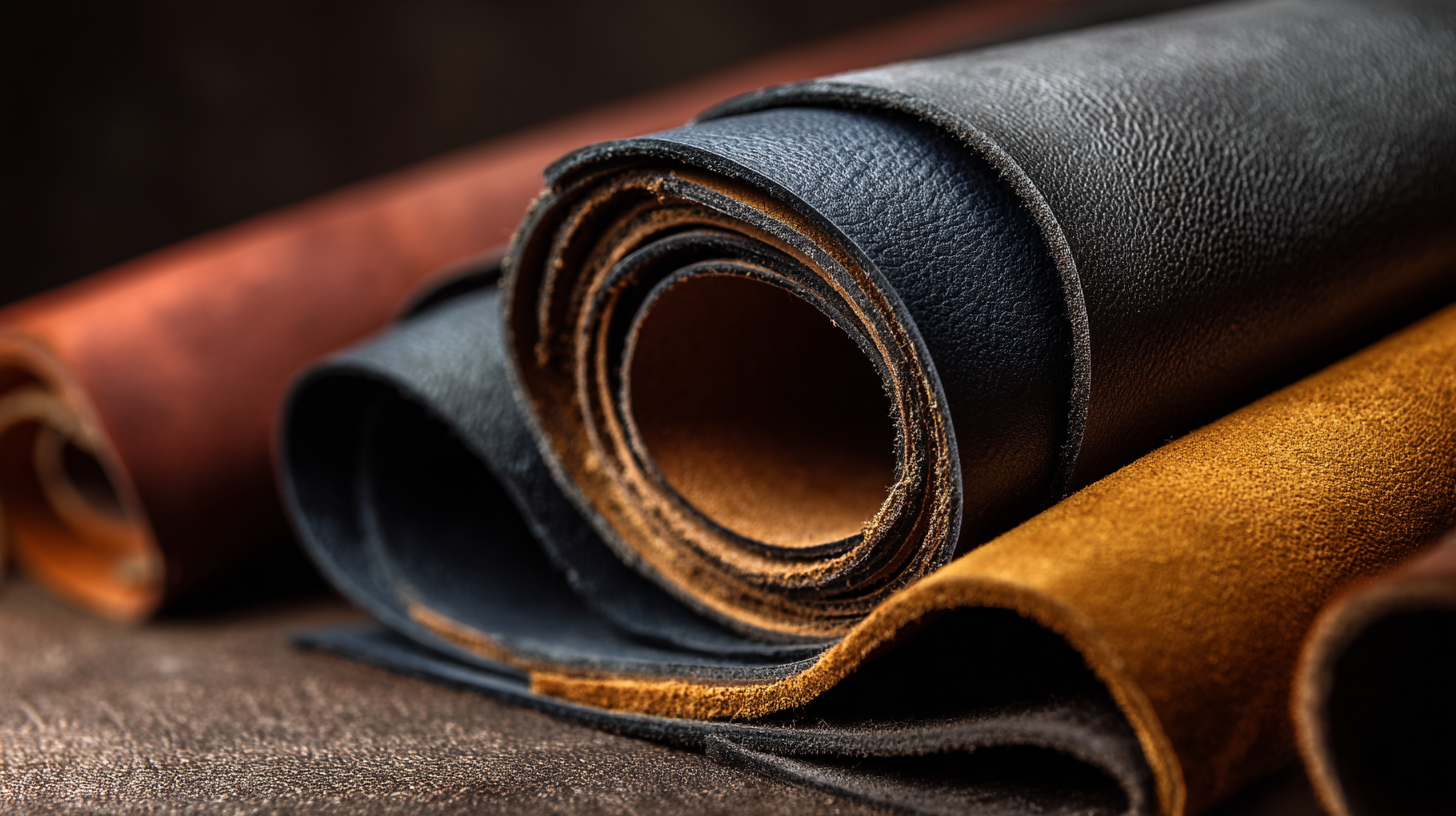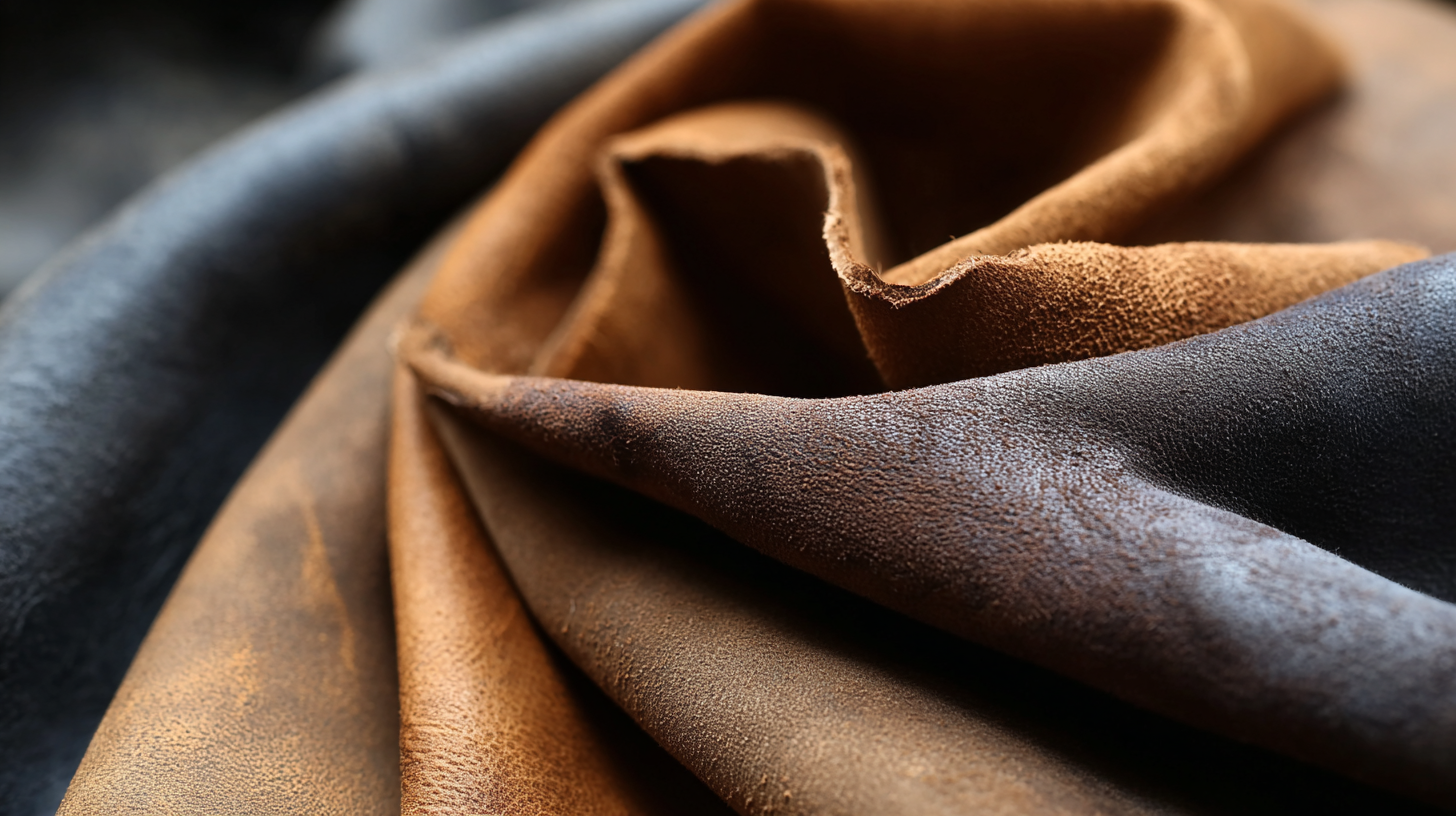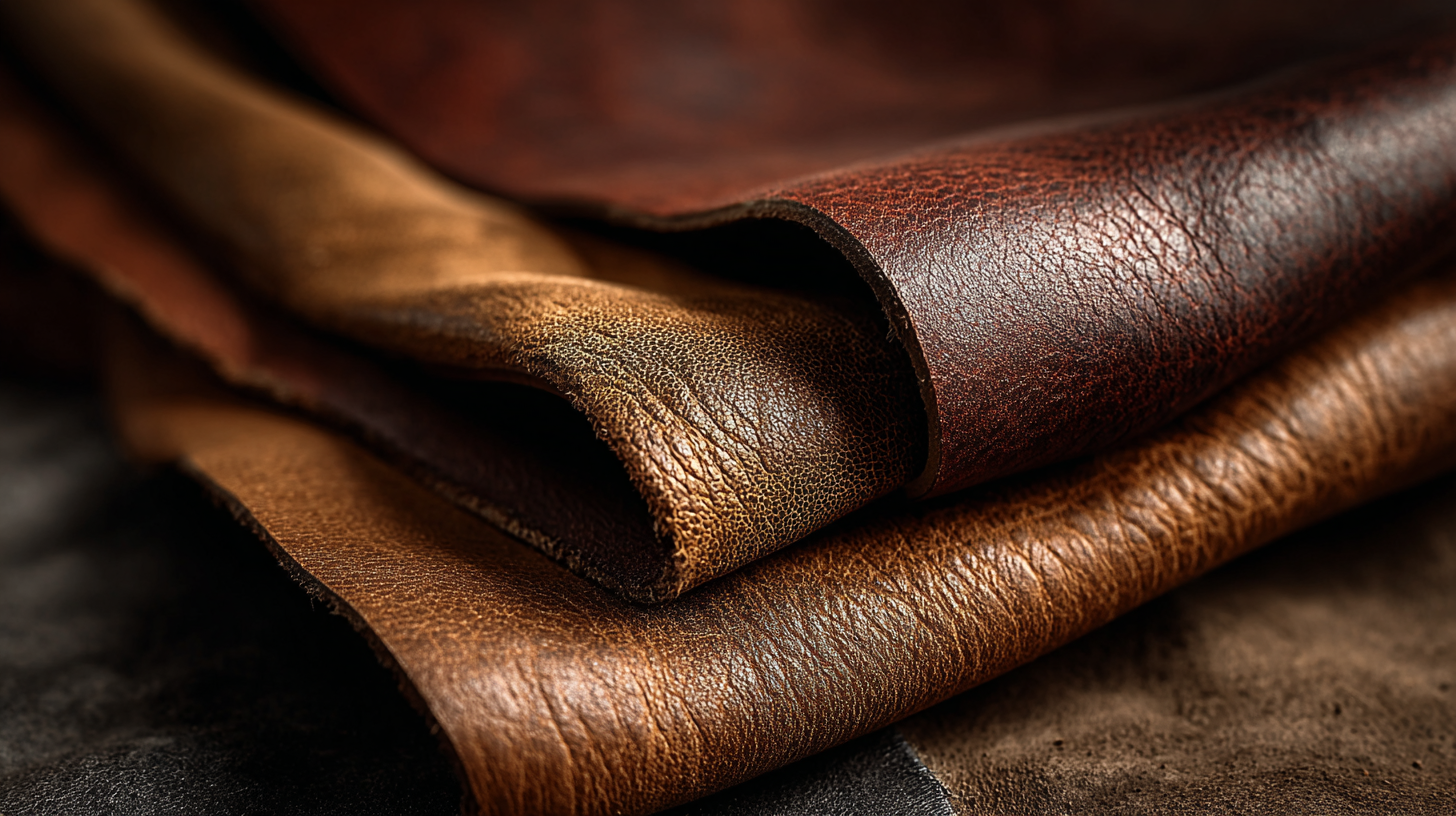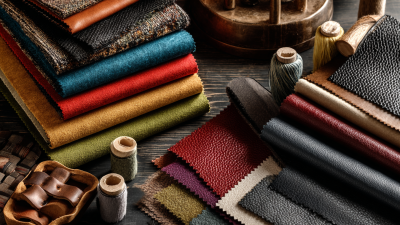Blog

Blog

Blog

How to Choose the Best Leather Material for Long Lasting Durability and Style
Choosing the right leather material is essential for ensuring both durability and style in your leather goods. According to a recent report by Research and Markets, the global leather goods market is projected to reach USD 426.8 billion by 2027, highlighting the increasing demand for high-quality leather products. However, not all leather materials are created equal. For example, full-grain leather, known for its natural finish and breathability, tends to be more durable than corrected-grain leather, which is treated to remove imperfections. Additionally, a study by the Leather and Hide Council indicates that consumers are increasingly prioritizing sustainable and ethically sourced leather, reflecting a shift in market preferences. Thus, understanding the characteristics and classifications of various leather materials is crucial for making an informed purchase that balances longevity with aesthetic appeal.

The Importance of Leather Grades: Understanding Full Grain vs. Top Grain
When selecting leather for durability and style, understanding the different grades of leather is crucial, particularly the distinction between full grain and top grain. Full grain leather is made from the highest-quality hides, retaining the natural texture and imperfections of the hide. This type of leather is not sanded or altered, which allows it to age beautifully, developing a rich patina over time. Its dense fibers contribute to exceptional strength, making it highly resistant to wear and tear. For those seeking longevity in their leather goods, full grain is often the best choice.
On the other hand, top grain leather is created by sanding away the outer layer of the hide, making it more uniform in appearance and giving it a softer feel. While top grain leather is still high-quality and durable, it lacks the natural imperfections that characterize full grain leather. This processing also makes it more susceptible to scratches and damage over time. However, because of its more polished look, it is favored in fashion-forward designs. Understanding these differences will guide consumers in making informed choices that align with their preferences for both aesthetics and durability.
Leather Grades Comparison: Full Grain vs. Top Grain
Key Factors Affecting Leather Durability: Thickness, Tannage, and Treatment
When choosing leather for durability and style, several key factors play a significant role. Thickness is one of the most critical aspects, as it directly influences the leather's strength and longevity. Thicker leather tends to be more resistant to wear and tear, making it an excellent option for items that undergo daily use, such as bags and boots. However, it's essential to balance thickness with flexibility, as overly thick leather can be stiff and uncomfortable.
Another vital factor is the tannage process, which determines how the raw animal hides are treated to become usable leather. There are several methods of tanning, such as chrome tanning and vegetable tanning, each offering different benefits. Chrome-tanned leather is water-resistant and often more pliable, while vegetable-tanned leather has a natural feel and develops a patina over time. The treatment of leather after tanning, including finishing techniques and protective coatings, also affects its durability. Properly treated leather can resist stains and moisture, ensuring it maintains its quality and appearance for years.
Identifying Quality Leather: The Role of Source, Type, and Ethical Sourcing
 When selecting leather materials that provide both durability and style, understanding the source and type of leather is crucial. Quality leather typically comes from reputable sources, with full grain leather often regarded as the highest standard due to its ability to age beautifully while maintaining strength. Recent reports indicate that the European leather market is on track for growth, primarily driven by the increased demand for both full grain and synthetic leather options, catering to diverse consumer preferences.
When selecting leather materials that provide both durability and style, understanding the source and type of leather is crucial. Quality leather typically comes from reputable sources, with full grain leather often regarded as the highest standard due to its ability to age beautifully while maintaining strength. Recent reports indicate that the European leather market is on track for growth, primarily driven by the increased demand for both full grain and synthetic leather options, catering to diverse consumer preferences.
Ethical sourcing has become a significant focus within the industry, with various brands actively committing to sustainable practices. For example, companies are increasingly forming alliances with organizations dedicated to sustainable leather production, reflecting a broader trend towards environmental stewardship. Action from significant industry players emphasizes animal welfare within the leather supply chain, demonstrating a collective responsibility toward ethical sourcing. As sustainability gains further traction, brands that prioritize responsible material use are likely to lead the way in the evolving leather market.
Finishes and Textures: How They Impact Both Style and Longevity in Leather
When choosing leather materials for durability and style, it is essential to consider finishes and textures, as they significantly impact both aesthetics and longevity.
 Full-grain leather, for instance, is known for its toughness and ability to develop a beautiful patina over time. Reports indicate that full-grain leather can last for decades with proper care, making it a preferred choice among designers and consumers looking for lasting quality.
Full-grain leather, for instance, is known for its toughness and ability to develop a beautiful patina over time. Reports indicate that full-grain leather can last for decades with proper care, making it a preferred choice among designers and consumers looking for lasting quality.
In contrast, corrected-grain leather, which is sanded and treated to remove imperfections, may offer a smoother texture but often sacrifices durability.
According to market research, nearly 60% of consumers prioritize longevity in leather products, emphasizing the importance of selecting the right finish and texture.
Additionally, leather finishes like aniline and semi-aniline not only enhance the appearance but also maintain breathability and pliability, adding to the overall comfort and style of the item.
Understanding these key characteristics can help consumers make informed choices that align with their style preferences while ensuring their leather investments remain durable over time.
Maintenance Tips for Prolonging the Life of Your Leather Goods: Care and Conditioning Practices
Maintaining leather goods is essential for ensuring their longevity and preserving their aesthetic appeal. According to a recent report by the Leather and Hide Council of America, proper care can extend the life of leather products by an impressive 50%. Regular conditioning is crucial, as leather can dry out and crack over time. It is recommended to use a high-quality leather conditioner every six months to maintain its suppleness and shine. This simple practice not only prevents deterioration but also enhances the texture, making the leather look richer and more vibrant.
In addition to conditioning, routine cleaning is vital for preserving leather's durability. A survey conducted by the International Leather Goods Association shows that nearly 30% of leather damage is caused by improper cleaning methods. Utilizing a soft, damp cloth for surface cleaning helps remove dirt and oils, while avoiding harsh chemicals can prevent discoloration or damage to the leather. Furthermore, protecting leather from excessive moisture and direct sunlight can significantly mitigate fading and warping, thereby ensuring that your leather goods remain stylish and resilient over time. Following these maintenance tips can make a substantial difference in the lifespan and appearance of leather items.
How to Choose the Best Leather Material for Long Lasting Durability and Style - Maintenance Tips for Prolonging the Life of Your Leather Goods: Care and Conditioning Practices
| Leather Type | Durability Rating | Style Appeal | Maintenance Tips |
|---|---|---|---|
| Full Grain Leather | High | Classic | Condition regularly, avoid water exposure. |
| Top Grain Leather | Medium | Versatile | Use leather cream, keep away from direct sunlight. |
| Corrected Grain Leather | Low | Trendy | Clean with damp cloth, apply conditioner every 6 months. |
| Bonded Leather | Very Low | Modern | Avoid moisture, clean with a soft brush. |
| Suede Leather | Medium | Fashionable | Brush regularly, use water repellant spray. |
Related Posts
-

7 Best Leather Material Innovations Transforming Fashion Today
-

How to Choose the Best Leather Material for Your Next Project
-

The Ultimate Guide to Choosing the Right Seat Fabric: Insights and Trends from the Industry
-

PU Leather Solutions: Transforming Furniture and Fashion with Eco-Friendly Innovations
-

Ultimate Guide to Choosing the Best Furniture Upholstery Material
-

7 Essential Tips for Choosing Sofa Upholstery That Elevate Your Living Space
